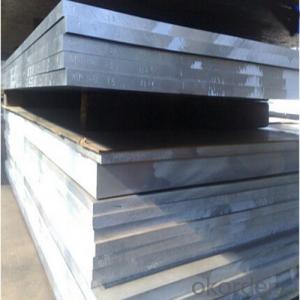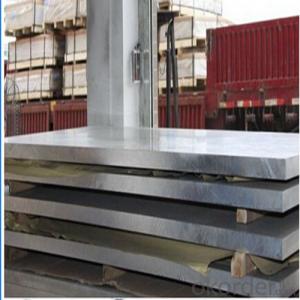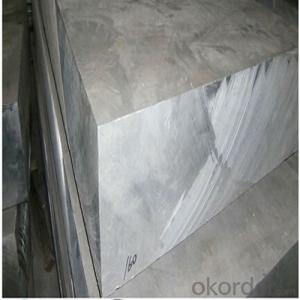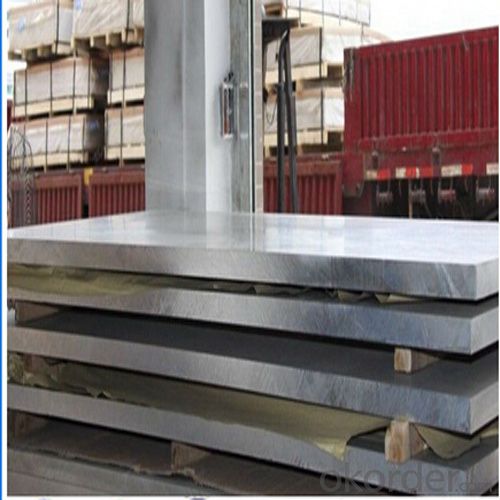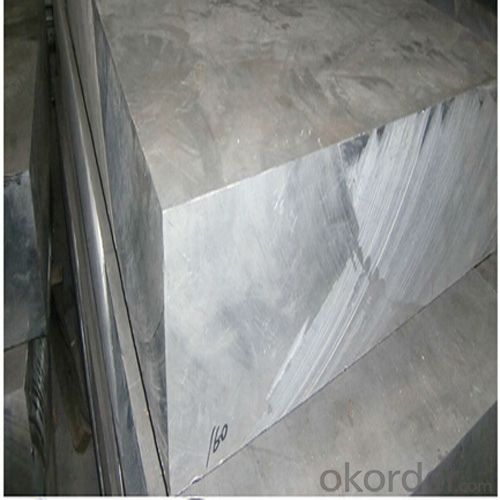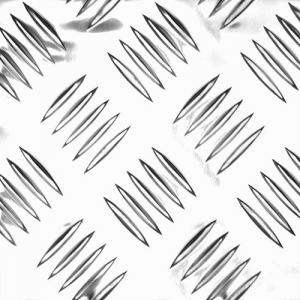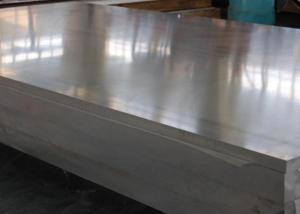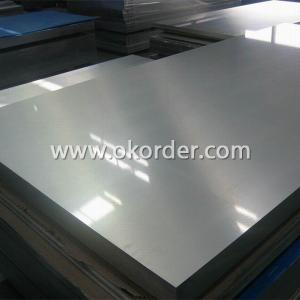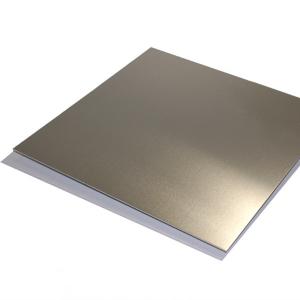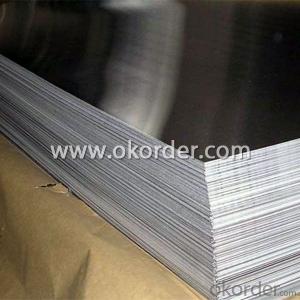Aluminum Thick Plate for shoes mold 6061
- Loading Port:
- Shanghai
- Payment Terms:
- TT or LC
- Min Order Qty:
- 5 m.t.
- Supply Capability:
- 10000 m.t./month
OKorder Service Pledge
OKorder Financial Service
You Might Also Like
Specification
1.Structure of Aluminum Thick Plate for Shoe Molds Description:
Our company can supply aluminium thick plates 6061. The thickness is 2mm-250mm, the common surface is polished with clear PVC film. The temper is T6, T651, F, H ect.
2.Main Features of Aluminum Thick Plate for Shoe Molds :
Good Corrosion Resistance
Good Machinability
High Quality
Competitive Price
3. Aluminum Thick Plate for Shoe Molds Images:
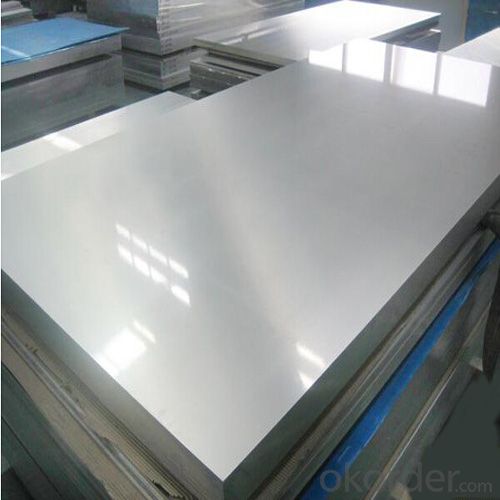
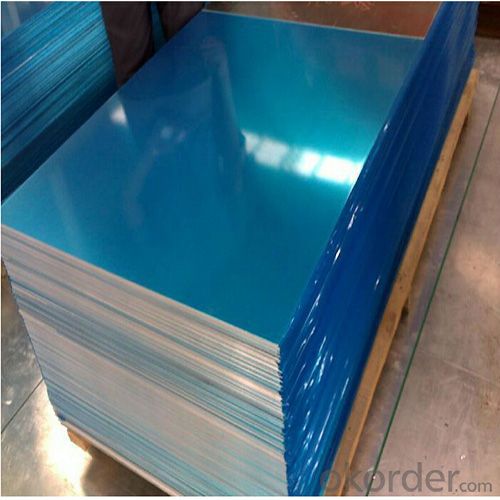
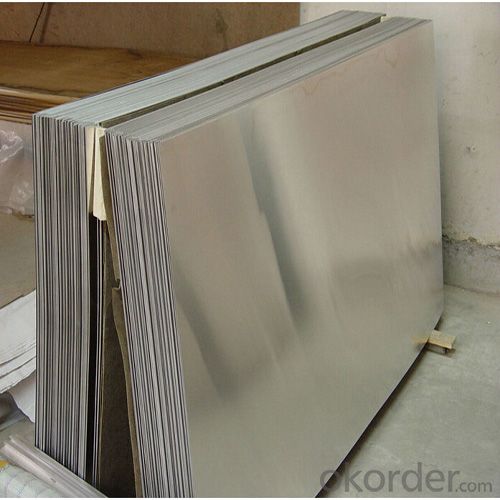
4. Aluminum Thick Plate for Shoe Molds Specification:
| Specification | Name: 6000 series Aluminum Plate | |||||||||||
| Alloy: 6061, 6082 etc. | ||||||||||||
| Temper: O, H112, T6, T651 etc. | ||||||||||||
| Thickness: 6-200mm | ||||||||||||
| Width: Up to 1500mm | ||||||||||||
| Surface treatment: mill finished, Print marks | ||||||||||||
| Feature | Machinability: In the harder T 4 and T6 tempers it is good. It is notably less easy to machine in the annealed temper. | |||||||||||
| Forming: Easily cold worked and formed in the annealed condition. Stamping, bending, spinning, deep drawing are all readily accomplished using standard methods. | ||||||||||||
| Welding: It has very good welding characteristics and may be welded by all of the common welding techniques. | ||||||||||||
| Heat Treatment: Solution heat treat at 990 F for adequate time to allow for thorough heating and then water quench. Precipitation hardening is done at 320 F for 18 hours and air cool, followed by 350 F for 8 hours and air cooling. | ||||||||||||
| Forging: It is capable of being hot forged at temperatures in the range of 900 F to 750 F. | ||||||||||||
| Hot Working: Hot working may be done in the temperature range of 700 F to 500 F. | ||||||||||||
| Cold Working: Cold working in the O temper condition is readily performed. The alloy is notably less easy to cold form in the T 4 and T 6 tempers. | ||||||||||||
| Annealing: Annealing should be done at 775 F for 2 to 3 hours followed by controlled cooling at 50 f per hour down to 500 F, then air cool. | ||||||||||||
| Aging: The aging precipitation heat treatment is done at 350 F for 8 hours followed by air cooling. This produces the T6 temper. | ||||||||||||
5.FAQ
Q1.How long have you been in this product?
A1:More than 10 years.
Q2. What's the minium quantity(MOQ)?
A2. 5 Metric tons
Q3. How long is shipping time?
A3. 7 (ready-made products)-25 days(OEM)
Q4. How do you guarantee the quality?
A4. 1. Cooperating and Exchaning experience with sevral quoted aluminum companies
2. Japanese and Swiss production line and skilled works (regular training and testing)
3. more than 10 years production experience.
Q5. Do you have after sale service?
A5. Yes. Any quality problem occurs within one year, pls take photoes,we will be responsible.
- Q: Can aluminum sheets be used for air conditioning systems?
- Indeed, air conditioning systems can make use of aluminum sheets. Due to its remarkable heat transfer properties, aluminum is widely employed in the fabrication of air conditioning systems. Its lightweight nature, resistance to corrosion, and exceptional thermal conductivity render it a perfect material for producing coils, fins, and heat exchangers within air conditioning units. Furthermore, aluminum sheets can be effortlessly manipulated and molded into diverse forms and dimensions, thereby enabling flexibility in both design and installation.
- Q: Can the aluminum sheets be used for manufacturing light reflectors?
- Certainly! Aluminum sheets possess the potential to be utilized in the fabrication of light reflectors. Due to its remarkable reflectivity, aluminum is a frequently employed metallic substance across diverse industrial fields, encompassing the creation of light reflectors. Its exceptional reflectivity facilitates the efficient redirection and intensification of light, rendering it an impeccable material for manufacturing light reflectors for a range of purposes, such as illuminating fixtures, automotive front lights, solar panels, and photographic apparatus. Moreover, the lightweight nature, durability, and resistance to corrosion exhibited by aluminum sheets further augment their aptness for fulfilling this objective.
- Q: I'm wanting to buy colorguard poles, and I found some good deals on aluminum and fiberglass ones. But what are the pros and cons of each one?
- I'd say fiberglass because... - Durability - Aluminum is a very bendable metal. It dents, it bends, and it breaks easier than any other metal pole you'll find. This is because it's a very low density metal. - Flexibility = more dramatic twirling due to pole flex, and it's less breakable. - Counter Weight = A flag on one side of the pole would be harder to move around swiftly without a counterweight. Thus a heavier pole would entail having a center of gravity on the flag pole closer to the hand, making it easier to maneuver the flag, but the pole would be harder to lift as a whole. I'm no expert on colorguard poles, though. Fiberglass has come a long way. While aluminum is always the same material, fiberglass is a constantly evolving building material.
- Q: How do aluminum sheets compare to other metals?
- When comparing aluminum sheets to other metals, several advantages can be identified. Firstly, aluminum is known for its lightweight properties, making it an excellent option for industries that prioritize weight, such as aerospace. Moreover, aluminum exhibits exceptional resistance to corrosion, allowing it to endure exposure to moisture and chemicals without deterioration. As a result, aluminum sheets are suitable for outdoor use and in environments with high humidity or corrosive substances. Additionally, aluminum possesses excellent thermal and electrical conductivity, making it a popular choice for applications that require efficient heat dissipation or electrical conduction, including heat sinks and electrical enclosures. Furthermore, aluminum sheets can be easily manipulated and formed, providing versatility in various manufacturing processes. They can be effortlessly bent, cut, welded, and machined, making them highly adaptable to different design specifications. When considering cost, aluminum generally proves to be more affordable compared to other metals like steel or copper. This affordability makes it a cost-effective option for numerous industries, particularly for large-scale production or projects with budget constraints. However, it is vital to note that aluminum sheets may not be suitable for applications that demand high strength or extreme temperatures, as aluminum has lower strength and melting points in comparison to certain other metals. In such cases, metals such as steel or titanium may be more appropriate. In conclusion, aluminum sheets possess a combination of qualities, including lightweight properties, corrosion resistance, good conductivity, versatility, and affordability, which make them a preferred choice in many industries. Nevertheless, it is crucial to consider the specific requirements of a project or application to determine if aluminum sheets are the most suitable option or if another metal would be more appropriate.
- Q: doesn't particularly need to be welding but i need to make an air tight permanent seal around 2 very thin sheets of aluminium (like .02 inches thick) i was thinking .02 inch 5052 aluminum because its the thinnest i can find but am obviously up for suggestions.
- May be you can use spot welding.But may be that would not give you an air tight permanent seal.So,you can go for Hydraulic pressing as in FERRARI 599 GTO's exhaust.(QUITE EXPENSIVE to be done at personal level)
- Q: What are the various kinds of aluminum sheets utilized in the manufacturing of automobiles?
- <p>Aluminum sheets are widely used in automobile manufacturing due to their lightweight and strength. The different types include: 1. 5000 series aluminum sheets, known for their good formability and corrosion resistance, often used for body panels. 2. 6000 series aluminum sheets, which are strong and used for structural components. 3. 7000 series aluminum sheets, known for their high strength-to-weight ratio, used in safety-critical parts. 4. Aluminum alloy sheets, which combine the properties of aluminum with other elements for specific applications. 5. Aluminum clad sheets, which have a corrosion-resistant layer on the surface. These types are chosen based on the specific requirements of each automotive component.</p>
- Q: What are the methods to protect aluminum sheets from corrosion during their usage?
- <p>To prevent corrosion of aluminum sheets during use, several strategies can be employed. First, apply a protective coating such as paint, anodizing, or a conversion coating to create a barrier against corrosive elements. Second, ensure proper cleaning and drying to avoid the accumulation of moisture and contaminants. Third, use corrosion inhibitors in environments where aluminum is exposed to aggressive chemicals. Fourth, maintain good ventilation to reduce humidity levels. Finally, regularly inspect and maintain the aluminum sheets to address any signs of corrosion early. These measures can significantly extend the lifespan and performance of aluminum sheets.</p>
- Q: How does the thickness of aluminum sheet affect its strength?
- The strength of an aluminum sheet is directly influenced by its thickness. Generally, a thicker aluminum sheet will possess greater strength compared to a thinner one. This correlation arises from the fact that the thickness of the sheet determines the quantity of material present, ultimately impacting its ability to endure external forces or loads. Typically, the strength of a material is measured based on its capacity to withstand stress without deforming or failing. Thicker aluminum sheets have a larger volume of material, resulting in an increased number of atoms and bonds to counteract forces. Consequently, these sheets exhibit a heightened resistance to deformation or failure, thus rendering them stronger. Furthermore, thicker aluminum sheets boast a higher load-bearing capacity. Consequently, they can endure heavier loads or higher pressures without distorting or failing. The augmented thickness allows for a greater distribution of the load, thereby reducing the stress placed on individual atoms and bonds within the sheet. Nevertheless, it is crucial to acknowledge that there exists a limit to the thickness at which the strength of an aluminum sheet reaches a plateau. Once this threshold is surpassed, further increasing the thickness may not yield significant improvements in strength. This limitation arises from the influence of other material properties of aluminum, such as its crystal structure and grain boundaries, which also contribute to determining its strength. To conclude, the strength of an aluminum sheet is directly linked to its thickness. Thicker sheets possess more material, enabling them to effectively resist deformation or failure under stress. Furthermore, their increased thickness allows them to support heavier loads or endure higher pressures. However, it is important to recognize that there is a limit to the thickness at which the strength plateaus, as other material properties also come into play.
- Q: Are aluminum sheets recyclable?
- Yes, aluminum sheets are recyclable. Aluminum is a highly recyclable material, and the recycling process for aluminum sheets is relatively simple and efficient. Recycling aluminum sheets involves melting the metal down and reforming it into new sheets or other aluminum products. The recycling process for aluminum requires considerably less energy compared to the production of new aluminum, making it an environmentally-friendly option. Additionally, recycling aluminum sheets helps conserve natural resources and reduces the amount of waste sent to landfills. Therefore, it is encouraged to recycle aluminum sheets whenever possible to contribute to a more sustainable and eco-friendly future.
- Q: What is the shear strength of 101 aluminum sheets?
- The shear strength of 101 aluminum sheets may differ based on different factors like sheet thickness, aluminum alloy composition, and manufacturing process employed. Typically, the shear strength of 101 aluminum sheets falls between 20,000 and 30,000 pounds per square inch (psi). Nevertheless, it should be emphasized that these values are approximate, and precise figures can vary. For precise information on the shear strength of 101 aluminum sheets, it is advisable to refer to the material's technical data sheet or contact the manufacturer directly.
Send your message to us
Aluminum Thick Plate for shoes mold 6061
- Loading Port:
- Shanghai
- Payment Terms:
- TT or LC
- Min Order Qty:
- 5 m.t.
- Supply Capability:
- 10000 m.t./month
OKorder Service Pledge
OKorder Financial Service
Similar products
Hot products
Hot Searches
Related keywords
